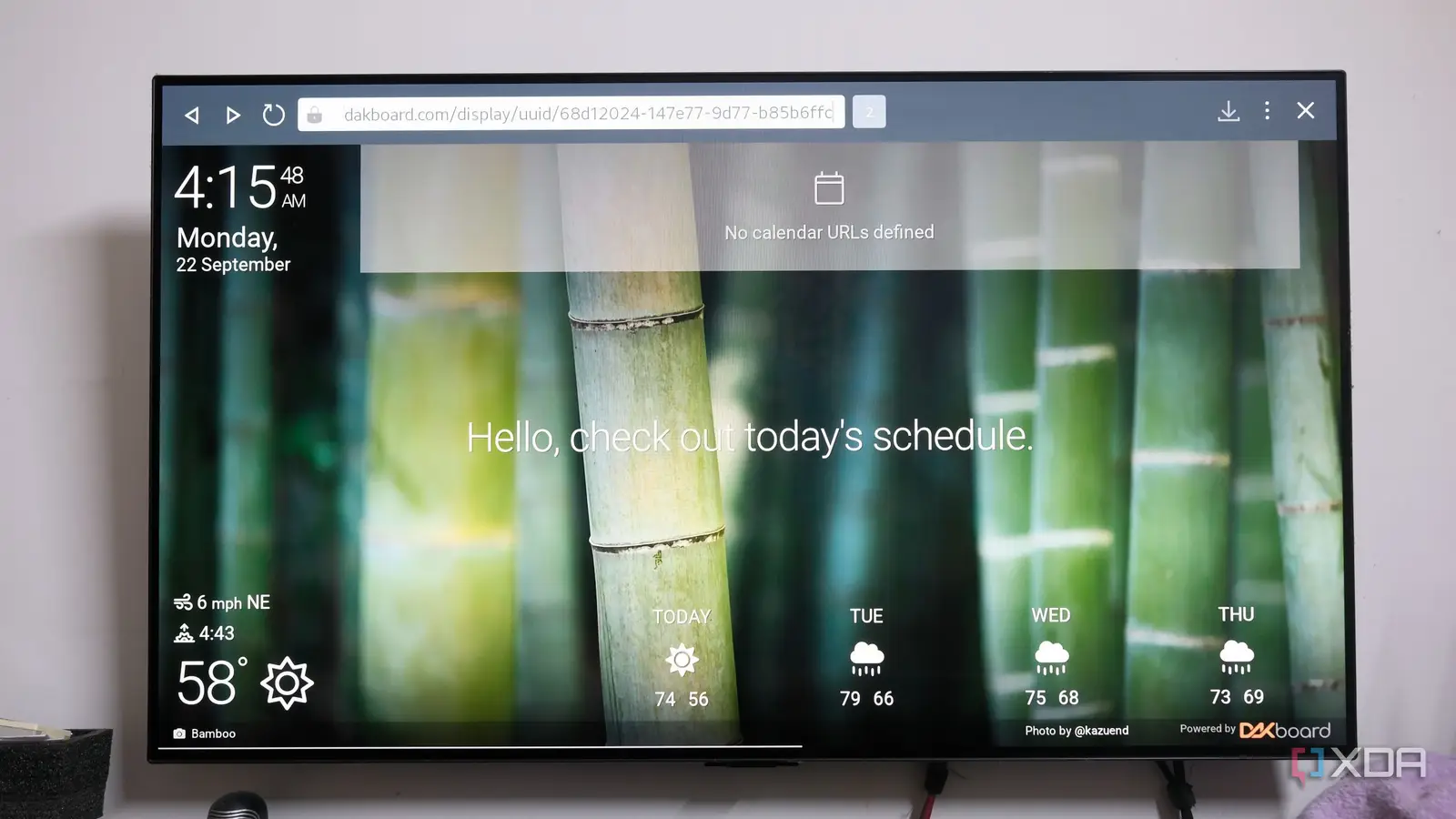
When setting up a home lab, I decided to keep the TV separate from it. Before I realized it, it took me several weeks, or rather months, to realize a TV’s true potential as a home lab aide. Over time, I’ve used my TV for various tasks that go beyond just watching Netflix. Whether considering the scope of my home network or the multiple devices in the home lab, a display larger than my 27-inch monitor has provenextremely helpful. Here are the distinct ways my TV works as a part of my home lab.
Dedicated media center and entertainment hub
Stream from Plex or Jellyfin on your NAS
One of the first things I did when setting up my home lab was turn my TV into a media center and entertainment hub. Initially, I tried using the media player on my LG C2’s webOS, but the experience wasn’t exactly smooth. So I switched to streaming content directly from my NAS using Jellyfin or Plex, and that has been a game-changer. I also cast content from my phone and iPad when needed. For me, the LG C2 plays a central role in my home lab, serving both work and entertainment purposes.
Smart home automation dashboard
Perfect for Home Assistant or Home Bridge
When exploring smart home automation, I tested both Homebridge and Home Assistant. After trying both, I settled on Home Assistant. Now, I access it right from my TV’s browser. It only takes a few clicks to tweak or restart a few things in Home Assistant, and its UI is surprisingly fun even with the remote. I also check camera feeds in Home Assistant. With Frigate integrated, I have set it up for event detection and AI-based camera monitoring. The large screen makes it easy to view everything, especially when I experiment with local LLMs for camera and voice interactions.
Controlling other smart devices with voice control
Using the built-in voice assistant support
My LG C2 shipped with Google Assistant and Amazon Alexa, but Google dropped Assistant support for LG TVs in May 2025. I use Alexa to trigger various automations in Home Assistant. My favorite ones are the routines, such as movie nights, that turn on lights to a specific color and brightness. However, this requires a Home Assistant Cloud subscription and an internet connection to function. That’s where I keep Alexa and other IoT devices on their dedicated VLAN.
A large display to use remote desktop apps
Apps supporting Linux distros may be scarce
One thing I envy about Android TVs is how easily one can install a Remote Desktop app. LG’s webOS includes a Remote Desktop feature tucked in its Home dashboard. I’ve used the remote desktop feature on my LG TV for my Windows 11 Pro desktop and MacBook Air whenever I needed a large workspace. However, after the webOS 24 update, it hasn’t worked well with Windows 11. Thankfully, it works smoothly with my MacBook Air running macOS 26 Tahoe. Unfortunately, I couldn’t get any Linux distros to work with LG’s remote desktop feature.
Monitoring and visualizing lab status
View Grafana, Pi-Hole, or ntopng stats
I prefer a single-view, visual setup to monitor what’s going on in my home lab. For that, I followed a guide from my colleague, Adam Conway, to set up Grafana with Prometheus, pulling metrics from Pi-hole, Home Assistant, and others. On days when I feel that web browsing and downloads are crawling, I open ntopng in my TV’s browser to view the network activity of my home lab. That helps figure out the culprits, especially when everyone in the house is online. I’ve bookmarked ntopng in the TV’s browser to quickly view it for monitoring bandwidth spikes and system activity status.
A dashboard for the self-hosted apps
Easy way to check their activity status
I use Heimdall as a self-hosted app dashboard to quickly access the different apps in my home lab. From Pi-hole to Nextcloud, it’s all a click away. The LG TV’s web browser makes apps like Immich look great on a large screen, especially for displaying photos with family. However, not all JavaScript-heavy apps work properly in the TV’s web browser. So, I also cast my laptop or tablet’s screen onto the TV to view everything in a large size. I’m considering moving to a flashier and more stats-friendly dashboard, such as Homepage or Dashy.
Use an SBC to put extra smarts into a TV
A retro-gaming console or a smart home hub
Inspired by my XDA colleague, Christian Cawley, I hooked a Raspberry Pi to a TV and installed a RetroPie on it for classic gaming fun. After I tweaked the resolution to look just fine on my 4K TV, the retro games were more enjoyable. Later, I flashed Home Assistant OS onto the same Pi and turned it into a dedicated smart home hub using Zigbee2MQTT and a Zigbee USB dongle. That’s how it also handles all the Zigbee devices in the house and has become an integral part of my home lab.
Time to reimagine what a TV can do



